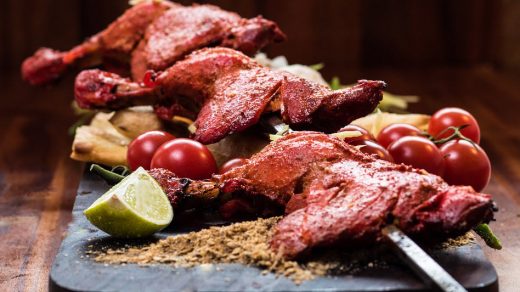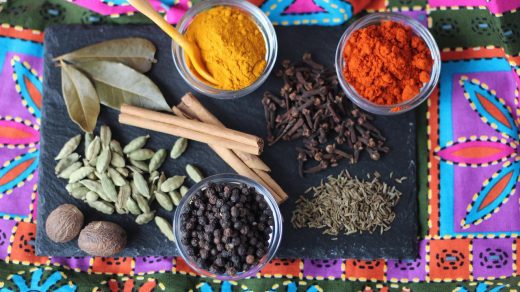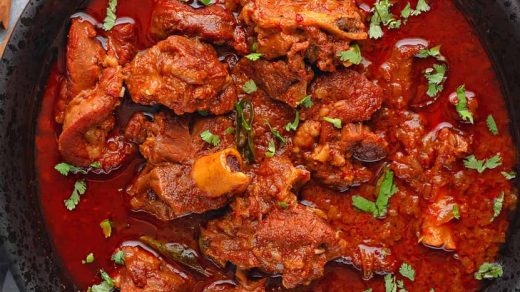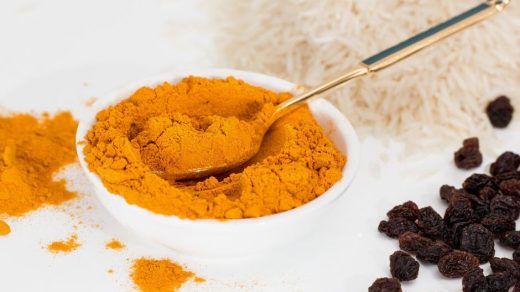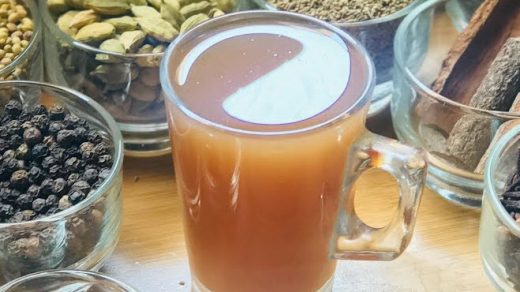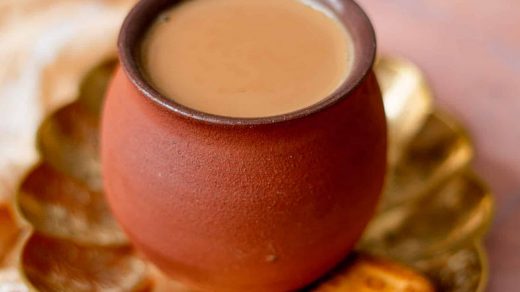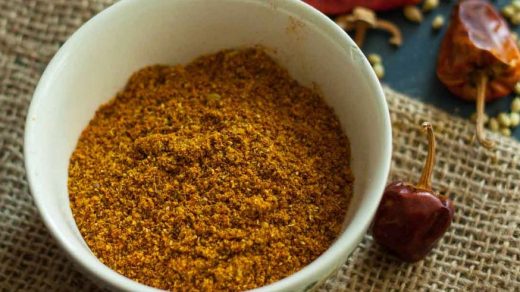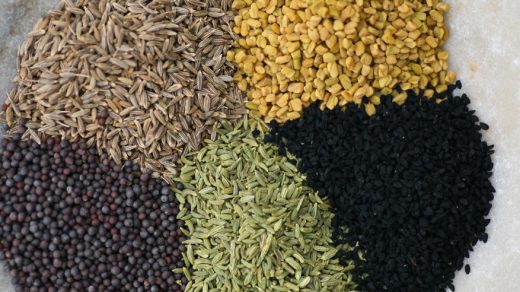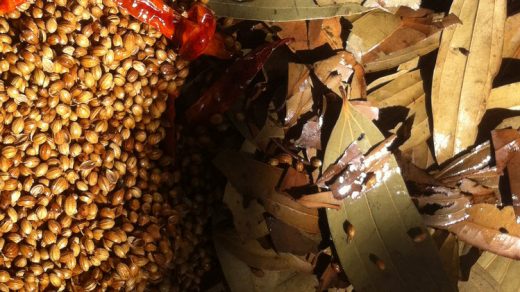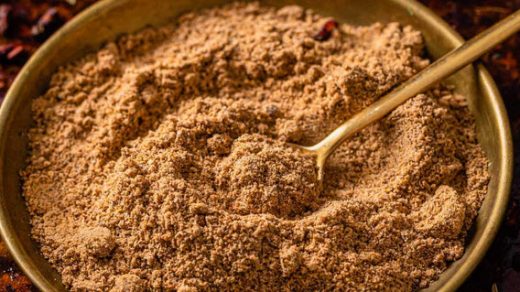Panch phoron is a whole spice blend from India. Unlike most masalas, it consists only of whole seeds. The name means “five spices”.
The standard panch phoron consists of equal parts of:
- Fenugreek seed
- Nigella seed
- Cumin seed
- Black mustard seed
- Fennel seed
Naturally, many other versions exist, as individual chefs blend their on panch phoron to suit diners´ preferences for various dishes. Some people do for instance prefer a panch phoron with less fenugreek seeds, since these seeds are a bit bitter.
In Bengal, it is quite common to skip the mustard seed and include radhuni instead. If you want to make a Bengali-style panch phoron but have a hard time sourcing radhuni, try with celery seeds instead.
Alternative names for panch phoron
- Paanch phorana in Maithili
- Pãch phoṛon in Bengali
- Pas phoṛôn in Assamese
- Padkaune masala in Nepali
- Pancha phutana in Odia
Use
Panch phoran is commonly used for “tempering”, which means that the seeds are fried in fat which makes them pop. Then, the other ingredients of the dish are added to the pan.
Panch phoran is typically used for:
- Vegetable dishes
- Lentil dishes
- Chicken stew
- Mutton stew
- Fish
- Pickles
What´s radhuni?
Radhuni is the Bengali name for the Trachyspermum roxburghianum plant. (Also known as Carum roxburghianum.) This flowering plant grows in many parts of South and South-Eastern Asia. It is called Ajamoda in Sanskrit and Ajmod in Hindi and Urdu.
The small dried fruits are referred to as seeds in culintary contexts, and they look similar to celery seeds. The smell is a bit like parsley but the taste is more akin to celery seeds.
Be careful when using radhuni, because it can easily overpower a spice mix.
Charchari seasoned with Panch Phoran
Charchari is a Bengali vegetable dish that exists in a multitude of variations. This is one version, and it is seasoned with panch phoran, mustard paste, turmeric powder and asafoetida.
Ingredients
- 3.5 cups ridge gourd
- 3 cups yellow pumpkin
- 3 cups brinjal
- 2 cups potatoes
- 2 cups broad beans
- 6 slit green chillies
- 2 tablespoons mustard paste
- ½ teaspoon turmeric powder
- Roughly 6 tablespoons canola oil (adjust as needed)
- 2 teaspoons mustard oil
- 1 teaspon panch phoran
- ¼ teaspoon asafoetida
- 2 teaspoons sugar
- Salt to taste
Instructions
- Cut and chop the vegetables and root vegetables. Make them roughly the same size. Put them in a kadai, wook, deep pan or similar. Add mustard paste and turmeric. (You should not add any water, because the ridge gourd will release enough water.) Cook covered until the food is soft. Set aside.
- Heat canola oil and mustard oil in another big pan. Add panch phoran and asafoetida to the hot oil. The hot oil will make the seeds pop. Then, add the cooked veggies from the other pan.
- Stir in sugar and salt. Sauté until most of the water has evaporated.
- Serve.
